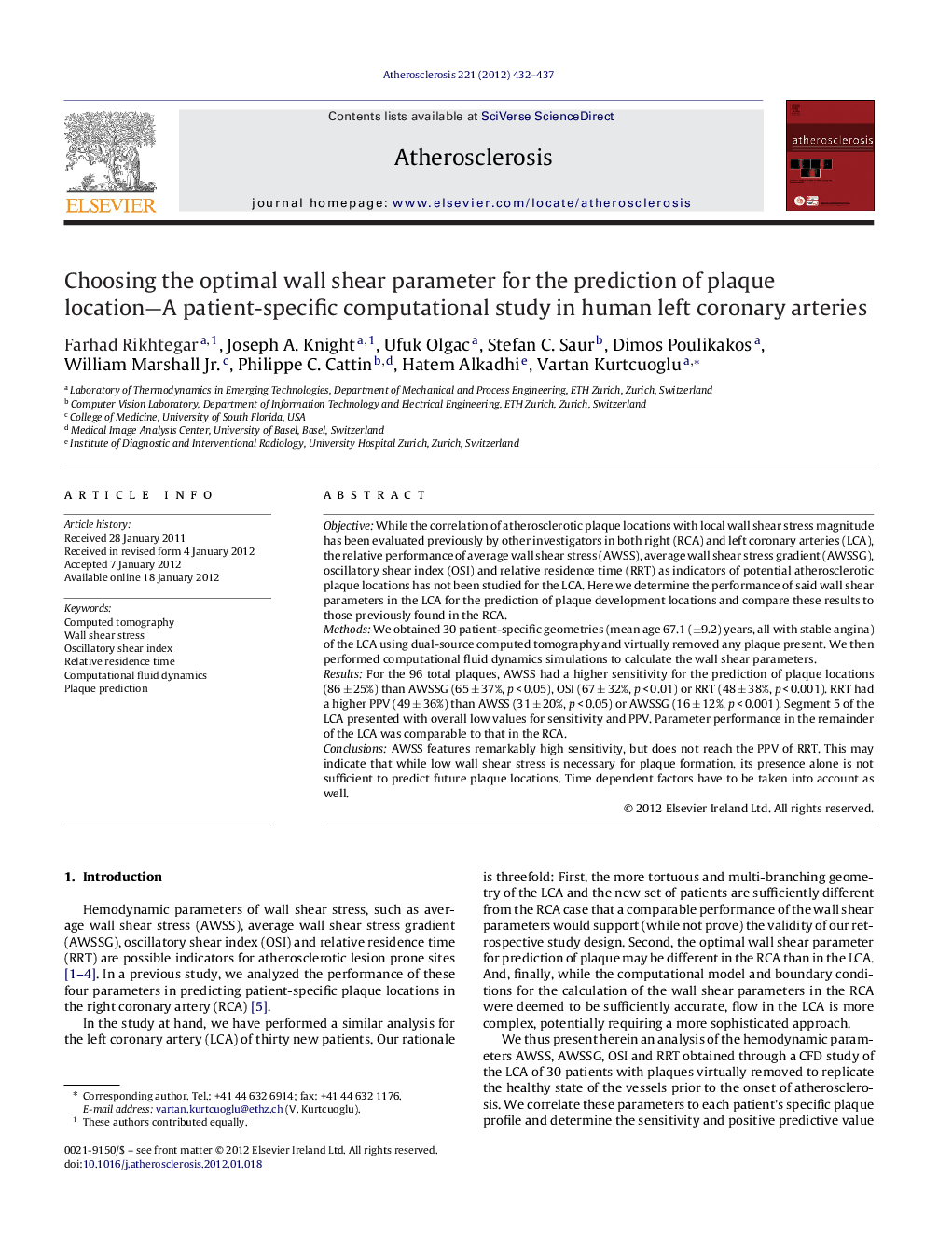| کد مقاله | کد نشریه | سال انتشار | مقاله انگلیسی | نسخه تمام متن |
|---|---|---|---|---|
| 5948715 | 1172381 | 2012 | 6 صفحه PDF | دانلود رایگان |

ObjectiveWhile the correlation of atherosclerotic plaque locations with local wall shear stress magnitude has been evaluated previously by other investigators in both right (RCA) and left coronary arteries (LCA), the relative performance of average wall shear stress (AWSS), average wall shear stress gradient (AWSSG), oscillatory shear index (OSI) and relative residence time (RRT) as indicators of potential atherosclerotic plaque locations has not been studied for the LCA. Here we determine the performance of said wall shear parameters in the LCA for the prediction of plaque development locations and compare these results to those previously found in the RCA.MethodsWe obtained 30 patient-specific geometries (mean age 67.1 (±9.2) years, all with stable angina) of the LCA using dual-source computed tomography and virtually removed any plaque present. We then performed computational fluid dynamics simulations to calculate the wall shear parameters.ResultsFor the 96 total plaques, AWSS had a higher sensitivity for the prediction of plaque locations (86 ± 25%) than AWSSG (65 ± 37%, p < 0.05), OSI (67 ± 32%, p < 0.01) or RRT (48 ± 38%, p < 0.001). RRT had a higher PPV (49 ± 36%) than AWSS (31 ± 20%, p < 0.05) or AWSSG (16 ± 12%, p < 0.001). Segment 5 of the LCA presented with overall low values for sensitivity and PPV. Parameter performance in the remainder of the LCA was comparable to that in the RCA.ConclusionsAWSS features remarkably high sensitivity, but does not reach the PPV of RRT. This may indicate that while low wall shear stress is necessary for plaque formation, its presence alone is not sufficient to predict future plaque locations. Time dependent factors have to be taken into account as well.
⺠We investigated the plaque prediction performance of wall shear stress parameters. ⺠Average wall shear stress (AWSS) showed the highest sensitivity. ⺠Relative residence time (RRT) showed higher positive predictive value than AWSS. ⺠Low shear stress may be a prerequisite for plaque formation. ⺠Temporal variation of WSS during the cardiac cycle may influence plaque formation.
Journal: Atherosclerosis - Volume 221, Issue 2, April 2012, Pages 432-437